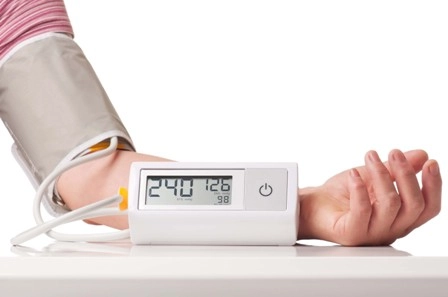Cardiology Coding Alert
CMS Updates ABPM NCD, Now Covers Suspected Masked Hypertension

Hint: The revised NCD lowers the blood pressure threshold for hypertension.
CMS recently made changes to the national coverage policy (NCD) for ambulatory blood pressure monitoring (ABPM), a non-invasive diagnostic test that uses a device to track a patient’s blood pressure over 24-hour cycles.
Read on to learn more about how the ABPM NCD changes will impact your cardiology practice.
Observe What Changed in ABPM NCD Policy
The old ABPM NCD covered ABPM only for patients with suspected white coat hypertension under specific conditions. Now, Medicare will also cover suspected masked hypertension, in addition to white coat hypertension.
White coat hypertension defined: “White coat hypertension occurs when a patient’s anxiety from being in a clinical setting causes an increase in blood pressure beyond what occurs outside the clinical setting,” according to a recent CMS press release.
Masked hypertension defined: Masked hypertension occurs when a patient’s blood pressure measurements that the physician takes in his office are lower than the blood pressure measurements the physician takes outside his office.
Masked hypertension is “essentially the opposite of white coat hypertension,” according to CMS.
Lower blood pressure threshold: Another change you will see in the updated NCD is that Medicare lowered the blood pressure threshold for hypertension. The threshold has changed from 140/90 to 130/80.
Break Down the ABPM Policy for Deeper Understanding
CMS will cover ABPM for diagnosing hypertension in Medicare patients under the following circumstances:
- Suspected white coat hypertension: For this condition, a patient must have an average office blood pressure reading of systolic blood pressure that is greater than 130 mm Hg, but less than 160 mm Hg. Or the patient must have a diastolic blood pressure reading that is greater than 80 mm Hg, but less than 100 mm Hg. These blood pressure readings should occur during at least two separate clinic or office visits. The physician should take at least two separate measurements at each visit and at least two blood pressure measurements outside of his office, which result in a <130/80 mm Hg reading.
- Suspected masked hypertension: For this condition, a patient must have an average office blood pressure that reads between 120 mm Hg and 129 mm Hg for systolic blood pressure. Or the patient should have an average office diastolic blood pressure that is between 75 mm Hg and 79 mm Hg. These measurements must occur at two separate clinic/office visits. The physician should take at least two separate measurements during each of these visits, and he should also take at least two blood pressure measurements outside his office, which result in a ≥130/80 mm Hg reading.
Additionally, the NCD sets forth these certain conditions ABPM devices must meet:
- The ABPM device should be able to produce standardized plots of blood pressure measurements for 24 hours. It should also be able to separate daytime and nighttime windows from normal blood pressure bands.
- The physician should give the device to the patient with oral and written instructions. He should also perform a test run of the device in his office.
- The treating physician or treating non-physician practitioner must interpret the results of the device’s monitoring.
Don’t miss: Medicare will cover ABPM for eligible patients only once per year.
Related Articles
Cardiology Coding Alert
- ICD-10 Update:
Atrial Fibrillation, Embolism and Thrombosis Additions Top Your New Cardiology ICD-10 Codes
Dig into new atrial fibrillation codes I48.11 and I48.19. CMS recently published its list of [...] - News You Can Use:
CMS Updates ABPM NCD, Now Covers Suspected Masked Hypertension
Hint: The revised NCD lowers the blood pressure threshold for hypertension. CMS recently made changes [...] - Leadless Pacemakers:
Review Codes You Should Never Report Together to Reduce Leadless Pacemaker Claim Errors
Leadless pacemaker insertion, replacement, or removal includes catheter insertion into right ventricle. If you’ve been [...] - You Be the Coder:
Dig Into Behavior Change Service Codes
Question: We have an in-patient addicted to meth and other drugs. The cardiologist documented that [...] - Reader Question:
Discover Heart Failure ICD-10 Code
Question: What does the acronym HFpEF mean? My cardiologist documented this condition, and I’m not [...] - Reader Question:
Report EKG and Stress Echo With Confidence
Question: The cardiologist performed an electrocardiogram (EKG), and then he decided the patient needed a [...] - Reader Question:
Sequence External Cause Codes Carefully
Question: Should you ever sequence an external cause code as the principal diagnosis on a [...] - Reader Question:
Catch All Documentation Details For Clean Atherosclerosis Coding
Question: Can you help me better understand when it is appropriate to code I25.11 versus [...]




